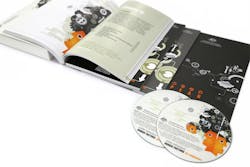Support for Human Factors Training: Look Down Under
Maintenance organizations are always looking for the "latest and greatest" to improve their basic human factors training, or to supplement recurrent training. Well, look no further. The Australian Civil Aviation Safety Authority (CASA) has set a new international standard for high-quality human factors training materials. CASA calls it Safety Behaviours – Human Factors for Engineers.
Over the years I have developed, observed, and delivered a lot of maintenance human factors training throughout the world. I have also advised government and industry about the availability of products and services that can not only meet requirements, but also ensure continuing safety and efficient performance. There is an abundance of quality information available, as evidenced by a Google search of the term ‘maintenance human factors’. The links also lead to many excellent service providers for training delivery. It is difficult to sort through the information to find the product/service that works for your organization. There is something for everyone in the CASA package.
One size does not fit all
Organizational requirements for HF training materials are varied. The variance comes from the differences in organizations’ size, national aviation authority requirements, nature and time of work performed, industrial agreements, stability of workforce, qualifications of local training personnel, and level of commitment from management. Some organizations try to do as much as possible with computer-based training (CBT). Others have found that the blend of technology-based training and resident training, with an instructor, works best. When tied to a learning management system, the trainee must complete the CBT before participation in the instructor-led training. Some authorities, like Transport Canada, insist that CBT is not an acceptable human factors training alternative.
Time is money in aircraft maintenance. Thus, some organizations strive to complete the training as quickly as possible. There are not many requirements for a specified training time. There are many guidelines on the topics that should be included for initial as well as continuing/recurrent training. Organizations should strive for excellence and test to ensure that the training delivers a specified level of competence and, hopefully, lasting behavioral change.
Capability of the organization’s training department affects training design and delivery. The May 2013 AMT magazine covers the newly proposed EASA requirements for a human factors trainer. Small companies may choose to send personnel to off-site classes offered by external training services providers. Such courses likely ensure an experienced trainer who will bring a variety of industry stories to the class. The trade-off with external vs. local trainers is the extent to which the content can be matched to organizational challenges and culture. Many human factors issues are common to the entire industry. Thus, most externally provided information is relevant.
What’s on training organizations’ HF wish list?
HF training has been around for nearly 20 years. Therefore the wish list is asking for fresh ideas, new graphical depictions, new event scenarios, and improved multimedia. Concepts like PEAR, Dirty Dozen, and Swiss Cheese still have high value, but trainers and learners want the tested concepts to look new. Worn-out graphical depictions from the '90s are insufficient. The same holds true for videos. The Canadian Defense film, about the C-130 and the Dirty Dozen, has a great message, but can an organization expect today’s learners/gamers to accept old-school edutainment?
There are newer videos. Some are free on YouTube and others at a fair and reasonable cost. Some organizations, mostly large ones, have produced videos focusing on local maintenance events. Delta Air Lines and Lufthansa Technik, for example, have produced effective videos. However, it takes a deep pocket ($10-15K USD for every finished quality minute) and a high level of commitment to produce quality video within an airline training organization. I suggest that such endeavors are for video production companies, with appropriate HF technical support.
Human factors trainers use accident or event scenarios to emphasize a point or to permit students to find the human factors contributing factors. Such learning experiences should probably not predate the students’ birth. While accidents and events are infrequent, those used for HF training should be current. New scenarios are on the trainers’ wish lists.
Finally, when there are regulations, they must be met. Therefore, organizations want to be sure that the chosen training methods and content meet the requirements. Many organizations do not have HF training requirements, but are committed to continuing safety and efficiencies. That goal is fulfilled by the regulatory requirements.
Safety Behaviours – Human Factors for Engineers
CASA’s safety promotion team, with technical leadership from Gareth McGraw, human factors specialist, has just released the Safety Behaviourskit. It is a substantial package that includes: a 200-page resource guide for engineers; a student workbook; a facilitator’s guide; a packed DVD with a superb portrayal of a maintenance organization, as well as observations by human factors specialists; and a CD-ROM containing materials produced by CASA, and other National Aviation Authorities, including the FAA. It checks and exceeds every wish-list requirement.
See Figure 1 for a view of the materials, which are available for download free of charge at: www.casa.gov.au/hf. International individuals/organizations can obtain a hard copy of the kit, with DVD and CD included, at www.casa.gov.au/onlinestore. The cost about $100 USD, including postage and handling.
The content for the CASA training package is more than a repackaging of old ideas. The developers added value to the Dirty Dozen, to Dr. Jim Reason’s models of error and to the PEAR Model that this author created with Dr. Mike Maddox. For example, they enhanced the People, Environment, Actions and Resources in many ways. CASA subdivided People into Doing, Thinking, and Interacting, shown in Figure 2. That brilliant subdivision makes me ask “Why didn’t we think of that?”
The developers note that the content is in 100 percent alignment with the training requirements recommended by ICAO, EASA, and CASA. It appears that the content and excellent graphical layout exceeds the intentions of any current regulations. An example is Chapter 7, titled Alcohol and Other Drugs (AOD). It has 15 pages of information on this relevant topic. Like all chapters it follows a format that includes: an introduction; overview, specific details; points; and further information.
And then there are the support materials
CASA does not stop with an excellent eight-minute video integrated with the Resource Guide. The Workbook for Engineers has numerous activities for each of the 12 chapters. Many of the activities are focused on the video. The Facilitator’s Guide helps trainers to maximize the impact of the video as well as the printed materials. It ensures that the video is considerably more than an eight-minute show before break time. If the trainer wants more expertise, the DVD contains explanations/comments from a panel of 12 notable HF specialists. There is more! The deck of eight cards, shown in Figure 3, is a great pictorial reminder of engineering human factors challenges and solutions.
At the outset of this article I mentioned that I have seen a considerable amount of HF training materials over the years. I have never seen a more professional and comprehensive package than CASA’s Safety Behaviours: Human Factors for Engineers It is the new international yardstick (or metric ruler) by which other human factors training programs will be measured.
Dr. Johnson is grateful for the information provided by Ms. Margo Marchbank, Section Head Safety Promotion Communication & Managing Editor, Flight Safety Australia, Civil Aviation Safety Authority. For further information contact: [email protected].
Dr. William Johnson is the FAA Chief Scientific and Technical Advisor for Human Factors in Aircraft Maintenance Systems. Johnson is a member of the Human Factors Advisory Group to the European Aviation Safety Agency (EASA). The group worked with EASA to define human factors aspects of the proposed safety management system regulations.
About the Author

Dr. Bill Johnson
Chief Scientific and Technical Advisor Human Factors in Aviation Maintenance, FAA
““Dr. Bill” Johnson is a familiar name and face to many industry and government aviation audiences. Johnson has been an aviator for over 50 years. He is a pilot, mechanic, scientist/engineer, college professor, and senior executive during his career. That includes 16+ years as the FAA Chief Scientific and Technical Advisor for Human Factors.
Dr. Bill has delivered more than 400 Human Factors speeches and classes in over 50 countries. He has 500 + publications, videos, and other media that serve as the basis for human factors training throughout the world.
Recent significant awards include: The FAA “Charles E. Taylor Master Mechanic” (2020); The Flight Safety Foundation - Airbus “Human Factors in Aviation Safety Award” (2018), and the International Federation of Airworthiness “Sir Francis Whittle Award” (2017).
Starting in 2021 Johnson formed Drbillj.com LLC. In this new venture he continues to bring decades of human factors experience to aviators, worldwide.
